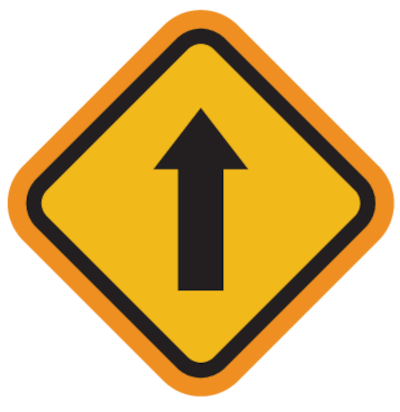A portfolio is a collection of your best work that you can show to potential clients. It’s a great way to demonstrate your skills and experience, and it can help you to land new freelance gigs.
Building a freelance portfolio can be challenging, but it’s especially difficult if you’re working remotely. You may not have access to the same resources and opportunities as freelancers who work in traditional office settings.
However, there are a few things you can do to build a strong freelance portfolio while working remotely:
- Start small. If you’re new to freelancing, don’t worry about having a perfect portfolio right away. Start by creating a simple website or blog where you can showcase your work. You can also use social media platforms like LinkedIn and Behance to share your work with potential clients.
- Network with other freelancers. Networking is a great way to learn about new freelance opportunities and to get your foot in the door. There are many online and offline networking opportunities available for freelancers. You can also join online communities for freelancers, such as Facebook groups and Slack channels.
- Volunteer your services. A great way to build your portfolio and gain experience is to volunteer your services to non-profit organizations or to small businesses. This is a great way to get your work in front of a wider audience and to build relationships with potential clients.
- Take on pro bono projects. Pro bono projects are a great way to gain experience and build your portfolio. However, it’s important to be selective about the pro bono projects you take on. Make sure that the projects are relevant to your skills and experience, and that they will help you to achieve your career goals.
When I first started freelancing, I was working remotely full-time. I didn’t have a lot of experience, and I didn’t have a strong portfolio. But I was determined to make it work.
I started by creating a simple website where I showcased my work. I also started networking with other freelancers and volunteering my services to non-profit organizations.
One of the best things I did was to take on pro bono projects. I worked on a variety of pro bono projects, including designing websites, creating logos, and writing blog posts. This helped me to gain experience, build my portfolio, and network with potential clients.
Over time, I was able to build a strong freelance portfolio and land my dream freelance gig. I’m now able to work remotely full-time and to do work that I love.
FAQ

What should I include in my freelance portfolio?
Your freelance portfolio should include a variety of your best work. This could include websites, logos, blog posts, social media posts, videos, and more. Make sure to choose work that is relevant to the types of freelance projects you want to work on.
How often should I update my freelance portfolio?
You should update your freelance portfolio regularly with new work. This will show potential clients that you’re still active and that you’re constantly improving your skills.
How do I promote my freelance portfolio?
There are a number of ways to promote your freelance portfolio. You can share it on your website and social media pages. You can also submit it to online directories and freelance marketplaces. You can also network with other freelancers and potential clients.
Importance of Personal Branding for Freelancers
In the world of freelancing, you are your brand. Cultivating a personal brand helps you stand out from the crowd and attract your ideal clients. It encompasses your style, values, and the quality of work you deliver. Develop a consistent brand voice and visual identity across your portfolio, website, and social media. Invest in courses or tools that help you understand and implement branding techniques. Recommendation: Purchase “Building a StoryBrand: Clarify Your Message So Customers Will Listen” by Donald Miller on Amazon to master the art of storytelling in branding.
Leveraging Multimedia in Your Portfolio
A dynamic portfolio isn’t just about text or static images. Integrating multimedia elements like videos, animations, or interactive graphics can make your portfolio more engaging. This showcases your adaptability and willingness to embrace modern trends. Recommendation:The Adobe Creative Cloud Subscription available on Amazon gives you access to premier multimedia creation tools like Adobe Premiere Pro and After Effects.
Testimonials: The Power of Third-party Validation
One of the most potent additions to any freelance portfolio is genuine testimonials from past clients. They offer social proof of your skills, professionalism, and the value you bring. Always ask satisfied clients for a short review or recommendation, and prominently feature these in your portfolio. Recommendation: Consider reading “Influence: The Psychology of Persuasion” by Robert B. Cialdini from Amazon to understand the psychology behind testimonials and endorsements.
Mobile Optimization: Ensuring Accessibility Everywhere
With the increasing use of smartphones and tablets, potential clients could view your portfolio on a variety of devices. Ensure that your portfolio website is responsive and offers a seamless experience on all screen sizes. This not only demonstrates your technical prowess but also increases your accessibility. Recommendation: The book “Mobile First Design with HTML5 and CSS3” by Jason Gonzalez on Amazon is an excellent guide for understanding the importance of mobile-optimized designs.
Continuous Learning and Skill Upgradation
The freelance industry is competitive, and continuous learning is key to staying relevant. Regularly update your skillset and feature new certifications or courses in your portfolio. This exhibits commitment to your craft and assures clients of your up-to-date knowledge. Recommendation: Amazon offers Udemy Gift Cards which can be used to enroll in a wide range of courses across different fields.
By diving deep into these additional facets of building a freelance portfolio, especially in a remote setting, freelancers can bolster their credibility, reach a broader audience, and ensure sustained growth in their career.
- Transform Your Health with Medford Medical Weight Loss Program - June 9, 2025
- A Chat with Nate and Mika, Christian Wedding Photographers - July 18, 2024
- Ultimate Guide To Playing Online Casinos - May 27, 2024








